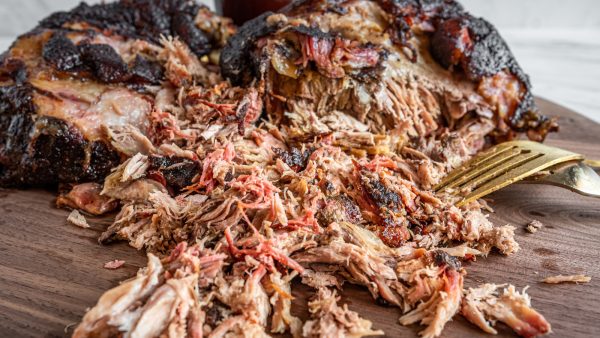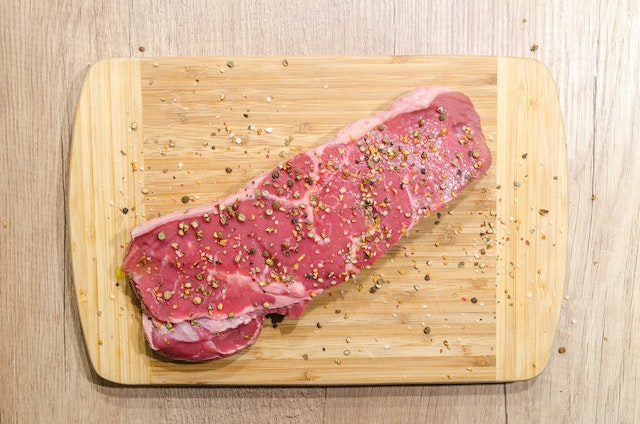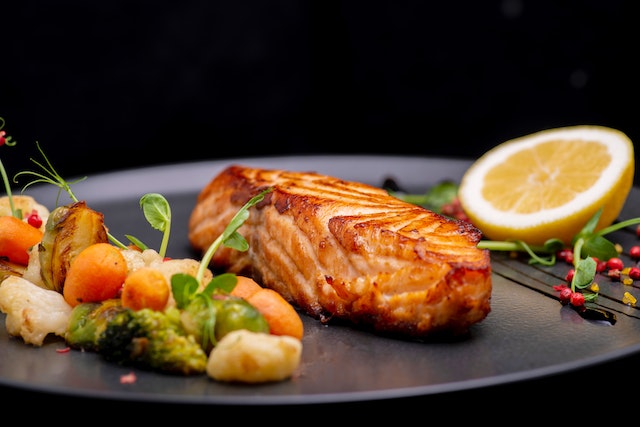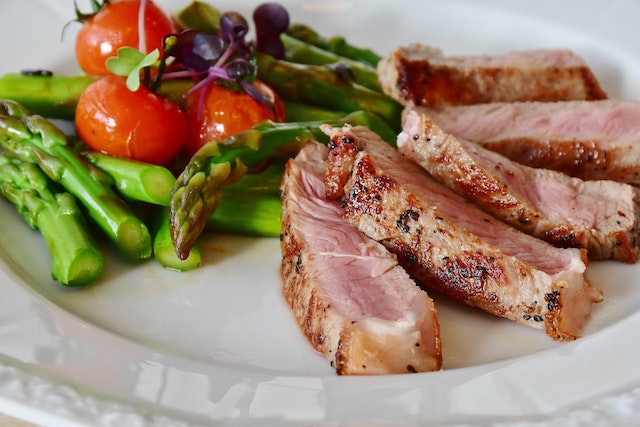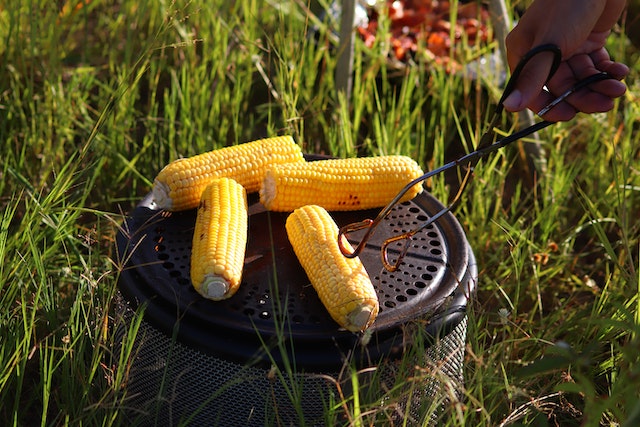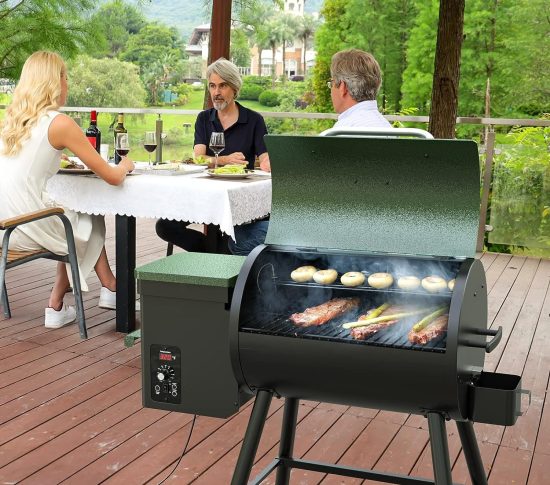Are you ready to take your BBQ skills to the next level? Then it’s time to master the art of using a BBQ thermometer! By utilizing this handy tool, you can ensure that your meat is cooked to perfection every single time.
Whether you’re a seasoned grill master or just starting out, understanding how to use a BBQ thermometer is essential for achieving that juicy, tender result that will have your friends and family begging for seconds.
In this article, we’ll explore the different types of BBQ thermometers available and discuss the proper placement to get accurate readings. We’ll also provide temperature guidelines for various types of meat, as well as tips for calibrating and maintaining your thermometer.

1. Types of BBQ Thermometers
Now let’s dive into the different types of BBQ thermometers you can choose from to take your grilling game to the next level! When it comes to BBQ thermometers, there are a few options to consider.
The first type is the instant-read thermometer. This handy device gives you a quick and accurate temperature reading in just a few seconds. It’s perfect for checking the doneness of your steaks or burgers.
The second type is the probe thermometer. This thermometer allows you to monitor the internal temperature of your meat while it’s cooking. It comes with a probe that you insert into the thickest part of the meat, and the device displays the temperature on a digital screen. This is great for achieving that perfect medium-rare steak or tender, juicy chicken.
Finally, there’s the wireless thermometer. This high-tech gadget lets you monitor the temperature of your grill or smoker from a distance. It comes with a transmitter that sends the temperature readings to a receiver, allowing you to keep an eye on things without having to constantly check on your food.
With these different types of BBQ thermometers, you’ll be able to grill like a pro and impress your friends and family with perfectly cooked meats every time.
2. Proper Placement of the BBQ Thermometer
For optimal results, make sure to position your BBQ thermometer correctly to get an accurate temperature reading. Proper placement of the thermometer is crucial in ensuring that your food is cooked thoroughly and to perfection. Here are three important tips to help you position your BBQ thermometer effectively:
- Probe Placement: Insert the probe into the thickest part of the meat, making sure it’s away from any bones or fat. This will provide you with the most accurate reading of the internal temperature.
- Avoid Contact with Grates: Ensure that the thermometer probe doesn’t touch the grates or any other cooking surface. Direct contact with a hot surface can give you an incorrect reading and affect the accuracy of your thermometer.
- Stay Away from Flames: Place the BBQ thermometer away from direct heat sources, such as flames or hot coals. This will prevent the thermometer from getting damaged and ensure accurate temperature readings.
By following these simple guidelines, you can ensure that your BBQ thermometer provides you with precise temperature readings, allowing you to cook your food to perfection every time. Remember, proper placement of the thermometer is the key to achieving delicious and evenly cooked BBQ dishes.
3. Temperature Guidelines for Different Types of Meat
Make sure you’re aware of the temperature guidelines for different types of meat to ensure perfect cooking results. When it comes to using a BBQ thermometer, knowing the ideal internal temperature for each type of meat is crucial. This will help you achieve that juicy and tender texture you desire.
For beef, the recommended internal temperature for a medium-rare steak is around 135°F (57°C), while a well-done steak should reach about 160°F (71°C). If you’re cooking pork, the safe minimum temperature is 145°F (63°C), ensuring it’s thoroughly cooked and free from any harmful bacteria. Chicken and turkey should be cooked to an internal temperature of 165°F (74°C), making sure they’re fully cooked and safe to eat.
When it comes to fish, the internal temperature will depend on the type and thickness. For most fish fillets, aim for an internal temperature of 145°F (63°C). However, thicker cuts like salmon or tuna can be cooked to a medium-rare temperature of around 125°F (52°C) for a more delicate and flaky texture.
Remember, these temperature guidelines are essential for food safety and ensuring your meat is cooked to perfection. So, grab your BBQ thermometer and use it to achieve those mouthwatering results that’ll make you the hero of any backyard gathering!
4. Tips for Calibrating and Maintaining Your BBQ Thermometer
Ensuring the accuracy of your grilling tool is crucial for achieving the perfect cook, so let’s dive into some tips for calibrating and maintaining your trusty BBQ thermometer. Here are three important things to keep in mind:
- Regular Calibration: To make sure your thermometer is giving accurate readings, it’s important to calibrate it regularly. One simple way to do this is by using the ice water method. Fill a glass with ice cubes and add some water. Insert the probe into the water without touching the sides or bottom of the glass. The thermometer should read 32°F (0°C). If it doesn’t, you may need to adjust the calibration screw or consult the manufacturer’s instructions.
- Proper Storage: Storing your BBQ thermometer correctly is essential for maintaining its accuracy. Make sure to keep it in a cool and dry place, away from extreme heat or moisture. Avoid placing it near the grill or in direct sunlight, as this can affect its performance.
- Regular Cleaning: Keeping your BBQ thermometer clean is important for both accuracy and hygiene. After each use, wipe the probe with a damp cloth or use a sanitizing wipe. Avoid immersing the entire thermometer in water, as it can damage the electronics. Also, remember to replace the batteries as needed to ensure reliable readings.
By following these tips, you’ll be able to calibrate and maintain your BBQ thermometer, ensuring accurate temperature readings and perfectly cooked meals every time. Happy grilling!
5. Common Mistakes to Avoid When Using a BBQ Thermometer
Don’t let your grilling experience go up in smoke by falling into these common pitfalls when using your trusty temperature gauge. To ensure accurate and delicious results, here are some mistakes to avoid when using a BBQ thermometer:
| Mistake | Solution |
|---|---|
| 1. Placing the probe incorrectly | Proper probe placement is crucial for accurate temperature readings. Make sure to insert the probe into the thickest part of the meat without touching bone or fat. This will give you the most accurate reading. |
| 2. Not calibrating the thermometer | Calibration is essential to ensure your thermometer is accurate. Use the boiling water method or ice water method to calibrate your thermometer before each use. This simple step will help you avoid undercooking or overcooking your meat. |
| 3. Opening the grill too often | Every time you open the grill to check the temperature, you let out valuable heat. This can affect the cooking time and temperature. Instead, rely on your thermometer to monitor the temperature and only open the grill when necessary. |
By avoiding these common mistakes, you’ll be on your way to perfectly cooked meals every time. Remember, using a BBQ thermometer is all about precision and accuracy, so take the time to use it correctly and enjoy the delicious results. Happy grilling!
Frequently Asked Questions
How do I know when my meat is cooked to the desired level of doneness?
To know when your meat is cooked to your desired level of doneness, use a BBQ thermometer to measure the internal temperature. Insert the probe into the thickest part of the meat and wait for the reading to reach the recommended temperature for your desired doneness.
Can I use a BBQ thermometer for grilling vegetables or other non-meat items?
Yes, you can use a BBQ thermometer for grilling vegetables or other non-meat items. It will help you ensure they are cooked to perfection and avoid under or overcooking.
Is it safe to leave the BBQ thermometer inside the grill or smoker while cooking?
Of course, it’s safe to leave the BBQ thermometer inside the grill or smoker while cooking! Who needs accuracy and precision anyway? Just toss it in and hope for the best. Happy burning!
Can I use a BBQ thermometer to check the internal temperature of baked goods?
Yes, you can use a BBQ thermometer to check the internal temperature of baked goods. Insert the thermometer into the center of the baked good and wait for the reading to display the desired temperature.
How often should I replace my BBQ thermometer to ensure accuracy?
To ensure accuracy, replace your BBQ thermometer every 1-2 years. Over time, exposure to heat and moisture can affect its calibration. Regularly replacing it will guarantee precise temperature readings and keep your grilling game on point.
Conclusion
So, now you know how to use a BBQ thermometer! Remember, placement is key – probe your meat in the thickest part for accurate readings. Follow temperature guidelines to ensure your meat is cooked to perfection, without any guesswork.
Take the time to calibrate and maintain your thermometer for consistent results. And above all, avoid any amateur mistakes that could ruin your BBQ experience.
